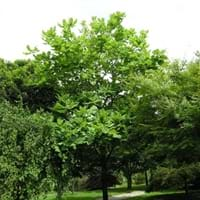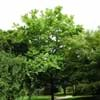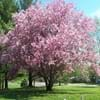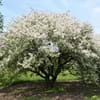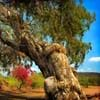Life Span
Perennial
Perennial
Type
Tree
Flowering Plants, Fruits, Trees
Origin
North America, United States, Mid-Atlantic United States, Southeastern United States, Central United States, South-Central United States
Central Asia
Types
Not Avaialble
Aceymac apple, Bailey Sweet apple, Dabinett apple, Nehou apple
Number of Varieties
Not Available
Habitat
Woodland Garden Secondary
Hillside
USDA Hardiness Zone
5-8
5-8
Sunset Zone
4, 5, 6, 7, 8, 9, 14, 15, 16, 17, 18, 19, 20, 21
A1, A2, A3, 8, 9, 10, 11, 12, 13, 14, 15, 16, 17, 18, 19, 20, 21, 22, 23, 24
Habit
Oval or Rounded
Oval or Rounded
Flower Color Modifier
Bicolor
Not Available
Fruit Color
Rose
Green, Red
Leaf Color in Spring
Green, Light Green, Silver
Dark Green
Leaf Color in Summer
Dark Green, Silver
Green
Leaf Color in Fall
Yellow, Yellow green, Brown, Silver
Brown, Green, Light Yellow
Leaf Color in Winter
Not Available
Not Available
Plant Season
Spring, Summer, Fall, Winter
Spring
Sunlight
Full Sun
Full Sun, Partial shade
Type of Soil
Clay, Loam
Loamy
The pH of Soil
Acidic, Neutral
Neutral
Soil Drainage
Average
Well drained
Bloom Time
Early Summer
Fall, Summer
Tolerances
Not Available
Drought
Where to Plant?
Ground
Ground
How to Plant?
Seedlings
Grafting, Seedlings, Transplanting
Plant Maintenance
Medium
Medium
Watering Requirements
Needs watering once a week
Medium
In Summer
Lots of watering
Lots of watering
In Spring
Moderate
Moderate
In Winter
Average Water
Average Water
Soil pH
Acidic, Neutral
Neutral
Soil Type
Clay, Loam
Loamy
Soil Drainage Capacity
Average
Well drained
Sun Exposure
Full Sun
Full Sun, Partial shade
Pruning
Remove dead or diseased plant parts
Prune when plant is dormant, Remove dead or diseased plant parts
Fertilizers
Balanced organic fertilizer
All-Purpose Liquid Fertilizer
Pests and Diseases
Bacterial leaf spot, Canker, Powdery mildew, Spot anthracnose
Aphids, Canker, Caterpillars, Powdery mildew, Root rot
Plant Tolerance
Drought
Drought
Flower Petal Number
Single
Single
Foliage Texture
Coarse
Medium
Foliage Sheen
Matte
Matte
Attracts
Scale Insects, Snails
Birds
Allergy
Mild Allergen
Mouth itching, Throat itching
Aesthetic Uses
Formal Garden, Showy Purposes
Not Available
Beauty Benefits
Not Available
Not Available
Environmental Uses
Air purification
Air purification
Medicinal Uses
Odontalgic, Stomachic
Cancer, constipation, Diabetes, Diarrhea, Dysentry, Fever, Heart problems, Tooth ache
Part of Plant Used
Bark
Fruits
Other Uses
Used for flooring, cabinet making
Used As Food, Wood is used for making furniture
Used As Indoor Plant
No
No
Used As Outdoor Plant
Yes
Yes
Garden Design
Feature Plant, Shade Trees
Fruit / Fruit Tree, Shade Trees, Showy Tree
Botanical Name
MAGNOLIA macrophylla
Malus domestica
Common Name
Bigleaf Magnolia, Large-leaved Cucumber Tree, Umbrella Tree
Apple Tree
In Hindi
मैगनोलिया
सेब का वृक्ष
In German
Umbrella Tree
Apfelbaum
In French
Umbrella Tree
Pommier
In Spanish
Árbol de paraguas
Manzano
In Greek
Umbrella Tree
μηλιά
In Portuguese
Árvore de guarda-chuva
Macieira
In Polish
Umbrella Tree
jabłoń
Phylum
Magnoliophyta
Magnoliophyta
Class
Magnoliopsida
Magnoliopsida
Order
Magnoliales
Rosales
Family
Magnoliaceae
Rosaceae
Clade
Angiosperms, Magnoliids
Angiosperms, Eudicots, Rosids
Tribe
Not Available
Not Available
Subfamily
Magnolioideae
Not Available
Number of Species
Not Available
Importance of Umbrella Tree and Apple Tree
Want to have the most appropriate plant for your garden? You might want to know the importance of Umbrella Tree and Apple Tree. Basically, these two plants vary in many aspects. Compare Umbrella Tree and Apple Tree as they differ in many characteristics such as their life, care, benefits, facts, etc. Every gardener must at least have the slightest clue about the plants he wants to plant in his garden. Compare their benefits, which differ in many ways like facts and uses. The medicinal use of Umbrella Tree is Odontalgic and Stomachic whereas of Apple Tree is Cancer, constipation, Diabetes, Diarrhea, Dysentry, Fever, Heart problems and Tooth ache. Umbrella Tree has beauty benefits as follows: Not Available while Apple Tree has beauty benefits as follows: Not Available.
Compare Facts of Umbrella Tree vs Apple Tree
How to choose the best garden plant for your garden depending upon its facts? Here garden plant comparison will help you to solve this query. Compare the facts of Umbrella Tree vs Apple Tree and know which one to choose. As garden plants have benefits and other uses, allergy is also a major drawback of plants for some people. Allergic reactions of Umbrella Tree are Mild Allergen whereas of Apple Tree have Mouth itching and Throat itching respectively. Having a fruit bearing plant in your garden can be a plus point of your garden. Umbrella Tree has showy fruits and Apple Tree has showy fruits. Also Umbrella Tree is not flowering and Apple Tree is flowering. You can compare Umbrella Tree and Apple Tree facts and facts of other plants too.
